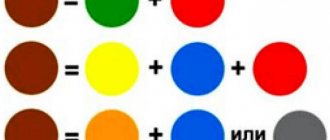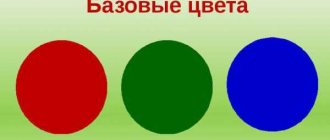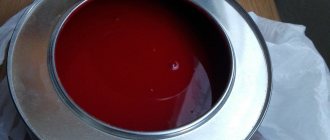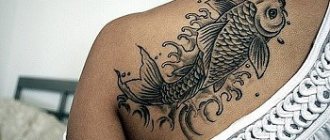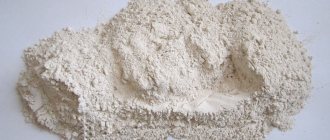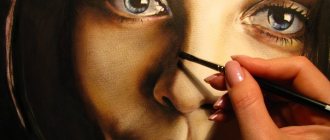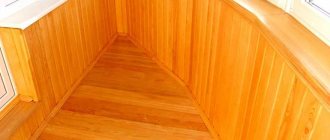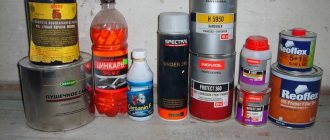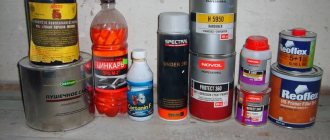Is it possible to coat gouache with varnish? I tell you how to cover paintings painted with gouache on canvas, paper and wood.
Any painter wants his work to be preserved for as long as possible and to remain the same as he intended it for many years, and even decades ago.
Oil paintings are usually coated with acrylic-styrene varnish, and paintings painted with acrylic paints are usually coated with water-based acrylic varnish. This varnish comes in both glossy and matte. And, depending on what varnish you choose, this is how your finished painting will look.
What then do artists use to cover gouache paints? And is it even possible to coat gouache with varnish, will it not ruin it? And if necessary, what is the best varnish to choose?
Let's look at the most basic questions so that you no longer have any doubts.
What kind of paint can you paint on glass?
Acrylic paints for applying images to glass create an opaque thin layer on the surface. The peculiarity of these dyes is that they have a high degree of adhesion to a smooth surface; during the polymerization process, the adhesion strength to glass only increases.
Interesting materials:
How long does a college exam take? How long does Paris Fashion Week last? How long does Phimosis surgery take? How long does a paid subscription on Twitch last? How long does advertising last on Channel One? How long does overtime last in hockey? How long does it take to restore a Steam account? How long does it take to recover from a concussion? How many days will the ovulation test show? How many days was Mtsyri* free?
How to cover a picture painted with gouache
What types of varnishes are there for painting paintings?
To protect your painting from external influences and preserve the paint layer, as well as to give the image gloss so that it shines beautifully, or matte, paintings painted in oil, acrylic or tempera paints are coated with varnish .
The following varnishes can be applied to oil paintings:
- Pistachio
A colorless, fairly elastic varnish that takes quite a long time to dry.
- Acrylic pistachio
Also a colorless varnish that covers the picture with a durable and elastic film. It takes a long time to dry.
- Retouch
Used by artists in multi-layer painting. Prevents fading of paint layers and enhances the adhesion of paints to each other.
To highlight some small details, add brightness and richness to your painting, cover it with varnish. Also, in this way you will protect the paint layer from environmental influences - dust, moisture, dirt.
But you should not varnish the picture immediately after painting. You need to wait for the paint to dry completely - and this may take some time, from six months to a year.
Before applying varnish, you need to clean the painting from accumulated dust and dry it.
To make it convenient for you to apply the varnish, and also to do it evenly, take a flute brush. Take one in width so that it is proportional to the width of the painting, and it would be convenient for you to apply paint.
How to properly coat gouache with varnish
To avoid spoiling the drawing, cover the gouache with a thin layer of varnish. When using aerosol varnish, spray it at a distance of at least 15 centimeters from the paint.
Take a flat, synthetic brush with good bristles. You don’t want the lint particles to harden along with the varnish in the drawing. Choose quality materials and you will succeed!
Methods for removing gouache from the surface of furniture
Housewives often encounter gouache stains left on furniture and walls by a small artist. It is much easier to remove gouache stains from the surface than from clothing.
Gouache is a vegetable paint based on adhesive. It quickly absorbs into the surface of any texture and dries. The stains are quite persistent and can leave dirty marks. This type of contamination must be removed from furniture immediately. How to effectively get rid of traces of gouache? There are several ways to eliminate them. Here are some of them:
- An indispensable assistant in removing traces of gouache is laundry soap.
- Gamma gouache is easily washed off the surface with plain water.
- To remove old paint marks, use mechanical cleaning, for example, with a tin brush.
- Stubborn traces of gouache can be cleaned with acetone.
- To remove gouache from varnished surfaces, you will have to use soft stain removers, for example, Vanish or Pemolux.
- Finger gouache paints can be wiped off the surface with a cotton pad dipped in vegetable oil.
- Plastic children's tables can be cleaned with ammonia.
- An effective remedy for removing gouache stains is baby soap.
- If the surface is not “afraid” of water, then it is enough to wipe it thoroughly with a sponge moistened with water.
Is it possible to mix acrylic paints with gouache?
Acrylic and gouache can be mixed, since both compositions are water-soluble. If you don’t have a color scheme at hand, then combining these materials is a good way to achieve the desired shade. Ready-made acrylic gouache can be purchased at artist stores.
It has the following advantages:
- Easy to apply, forming a smooth, velvety surface.
- Different colors mix well with each other.
- Has high covering power.
- Dries quickly.
- Does not change color after drying.
- Forms a waterproof coating.
- Doesn't damage brushes and washes off well from the palette.
The drawing, made in acrylic with the addition of gouache, is distinguished by its pure tones, brightness and expressiveness. The picture can be stored without additional protection, since the coating, after drying, does not fade in the sun, does not crack or peel off.
Drawing captivates both children and adults, allowing them to realize creative ideas with their own hands. If the desire to take up painting arises infrequently, there is no need to purchase expensive sets of paints. To do this, you can choose an acceptable option - gouache diluted with PVA glue. This type of paint is suitable for painting various materials: canvas, wood, ceramics, fabric, cardboard.
Covering and fastening rules
Before coating a product with varnish, it is important to familiarize yourself with the main points, rules, and recommendations of needlewomen. Experts advise preparing the paint before application - mixing it with PVA glue, for example. It won’t hurt to paint the addition, and the colors won’t “bleed away” or fade for many years. Before final treatment with a fixing agent, you can fix the work with regular hairspray - lightly spray the surface and dry.
It is important to consider the surface on which the gouache is applied. For example, if you apply paint to an untreated canvas, the material may begin to crumble even under a layer of fixative. Before starting work, it is better to apply a primer layer - the design will last longer.
Attention! When coating with non-aerosol varnish, craftsmen advise using not an ordinary brush, but a small roller (the size depends on the surface).
Gouache is an affordable, inexpensive paint that makes it a pleasure to create on your own, with children and friends. In order for the work to delight you with the brightness and richness of colors for a long time, the surface must be treated with a special varnish. A colorless, quick-drying product is suitable for furniture or construction treatment (parquet, for example). It is important to carefully read the instructions for each component of working with the product - paint, varnish, primer and others.
Source
Features of gouache
Gouache paints are made from pigment dyes mixed with white and glue and diluted with water. They have a dense texture. Their difference is color saturation and resistance to abrasion. After drying, the gouache makes the surface matte, velvety, and fits perfectly onto the painting. Its advantage is the ability to correct mistakes by applying a new layer on top. In addition, it is fun to experiment with it, mixing it with white and achieving all sorts of shades.
Set of 10 gouache paints
PVA glue is used in various types of artistic creativity and repair work. When combined with PVA glue, gouache acquires a lot of positive qualities:
- strength;
- durability;
- relief;
- ability to hold volume.
You should not apply an excessively massive layer of paint: after drying, it may crack and crumble.
If you don’t like the painting or are simply bored, it can be easily washed off the canvas almost without a trace, and the canvas or other blank will be useful for the next painting.
Rules for mixing tones
All information about the compatibility of shades and the features of combining paints is united by the science of color. It is based on a color wheel with various tones and their subtypes. There are three basic colors - red, yellow and blue. White and black stand apart, although they are not considered basic. All other tones can be obtained by mixing paints, which is why they are called secondary (green, purple, orange, blue, etc.).
There are basic laws for mixing dyes:
- all shades are divided into chromatic (color) and achromatic (white, black, gray), the former differ in color tone, lightness, saturation,
- when mixing two colors located along the chord of the color wheel, an intermediate tone will be obtained,
- when two opposite colors are combined from a circle, a different achromatic shade is obtained,
- You can mix paints mechanically (mix colors from two tubes) and optically (put strokes on top of each other).
You can combine gouache, acrylic, watercolor, water-based emulsion, oil, and construction paints on a white palette - this is how the finished shade can be seen in detail. If there is no palette, use a white earthenware plate, or, as a last resort, white disposable (plastic) dishes or paper.
How to cover gouache so that it does not wash off
Is it possible to coat gouache with varnish? I tell you how to cover paintings painted with gouache on canvas, paper and wood.
Any painter wants his work to be preserved for as long as possible and to remain the same as he intended it for many years, and even decades ago.
Oil paintings are usually coated with acrylic-styrene varnish, and paintings painted with acrylic paints are usually coated with water-based acrylic varnish. This varnish comes in both glossy and matte. And, depending on what varnish you choose, this is how your finished painting will look.
What then do artists use to cover gouache paints? And is it even possible to coat gouache with varnish, will it not ruin it? And if necessary, what is the best varnish to choose?
What colors make brown?
You can even make brown from plasticine or felt-tip pen ink, but the best result will be achieved when using gouache. To create brown paint, you need to prepare yellow, blue, red, green, black and white - their various combinations will be involved in obtaining a new tone.
There are several methods that allow you to make the desired color from other paints. It is necessary to take classic, pure tones without impurities. There are several options - basic, three-color and intermediate, and artists also know about a number of additional techniques for creating brown.
Using primary colors
This method is the simplest; it only requires accuracy and high-quality colors.
Classification of varnishes by purpose
Varnishes are used primarily for treating wooden surfaces, but they can be used to treat products and substrates after painting - brick, concrete, plaster. Compositions are divided into several broad groups depending on their purpose:
- For processing furniture and surfaces made of natural wood. Varnish is used for interior work. The composition of the varnishing agent can include coloring pigments for additional tinting of products, or the solutions can be tinted immediately before applying the varnish layer.
- For finishing parquet and parquet flooring. High-density varnishes help protect wooden floors from negative impacts and emphasize the woody texture of the natural material. They are characterized by resistance to abrasion and form a thin film.
- For decorative varnishing of walls indoors and outdoors. Universal products are characterized by acceptable resistance to moisture, ultraviolet radiation and are affordable. Using such products, you can varnish walls painted with various types of paint.
- Highly resistant yacht varnishes. They are advisable to use when treating surfaces and products that are often in contact with a damp environment. Used for finishing window frames on the street side, door frames, garden furniture, gazebos and other wooden structures.
What varnish should I use to protect a product or material? It depends on the surface being treated. Different compositions are intended for finishing wooden, brick or metal surfaces. It is necessary to take into account what kind of paint the base is painted with (water-based or non-water-based), as well as the location of the work - walls, facades, furniture.
On video: the intricacies of varnishing wooden products.
How the process works
To begin, put PVA glue into the recess in the palette and mix it with gouache. The optimal ratio is 1:1 or 1:2, but to obtain the desired consistency it is advisable to try different proportions. To create a new tone, we first dilute the paints until a completely satisfactory shade appears and only then add glue. This is due to the lighter color effect before drying.
Painting the figurine with gouache and PVA paint
Carefully scoop up the finished paint with a brush and apply it to the prepared material. To fix the finished pattern, it is coated with an additional layer of PVA glue or varnish. In this case, it will no longer be possible to wash off the image and reuse the canvas.
Gouache based on PVA glue is a very effective and affordable paint for creativity, which is easy to make yourself. It is suitable for painting a wide variety of surfaces.
Which varnish to choose for gouache
Gouache is a water-soluble paint. If you applied this paint to a surface that will be exposed, for example, to moisture, then so that the gouache does not wash off, you can varnish it.
In this case, is it possible to cover gouache with acrylic varnish? Remember that acrylic varnish will adhere well to acrylic paints on canvas or cardboard. It is better not to apply acrylic varnish to a gouache drawing on wood, or to gouache on paper. You may get because of this:
- cracks in the paint layer after drying
- flowing and smeared paint
Yes, acrylic varnish has many advantages, including the fact that it is odorless, but it is not suitable for gouache, as well as for watercolors!
To do this, you can take an aerosol varnish, or fix the drawing with hairspray, sprinkling it lightly over the gouache.
What varnish to coat gouache on wood
To fix gouache on wood, you can use special wood varnishes, for example, “Malva”.
Necessary materials
In order to make your own masterpiece, you will need:
- canvas;
- gypsum (primer);
- liquid acrylic or acrylic paint + fill for mixing yourself;
- plastic glasses;
- plastic to use as a cover (you can use a regular trash bag).
Note: It is best to use canvases that are folded and stapled at the back as they can be hung on the wall without a frame.
